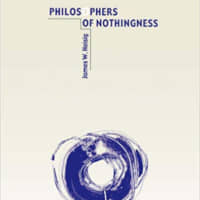The inescapable ephemerality of all natural phenomena is a concept as old as Japanese culture itself, systematized within Buddhist thought as the idea that the essence of all existence lies in a return to "nothingness."
Philosophers of Nothingness, by James W. Heisig.
392 pages
UNIVERSITY OF HAWAII PRESS, Philosophy.
In the 20th century, the Kyoto School assimilated Western systems of philosophy and fused them in creative, stimulating ways with "nothingness." Heisig's book introduces in successive parts the school's three main philosophers, beginning with Kitaro Nishida (1870-1945), who argued that "nothingness" comprised the ultimate reality. Hajime Tanabe (1885-1962), heavily influenced by George Hegel (1770-1832), by contrast argued that "nothingness" comprised not reality itself so much as a dynamic idea capable of challenging our assumptions about "reality."
Nishida and Tanabe's dry, "un-Japanese" language was then given rhetorical flourish, metaphorical insight and more practical application by their disciple Keiji Nishitani (1900-90).
Heisig describes Nishida's sentences as "matted" and Tanabe's as "serpentine," but his own prose can be guilty of those same traits. Yet soldier through, and the quietly gripping human dramas that underpin the philosophies unfold.
The means by which the philosophers allowed their theories to serve the interests of the militaristic nationalism of the 1930s before backtracking with tracts such as Tanabe's "Philosophy as Metanoetics"; the spectacular falling out between Nishida and Tanabe; and the twists and turns by which a host of cultural influences — from Christian concepts of God to Amidist notions of forgiveness — transformed their philosophies make this an ultimately engrossing read.



